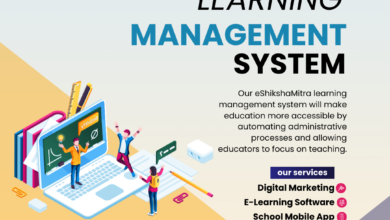How Automation Enables Continuous Assessment Models

In the ever-evolving landscape of education, continuous assessment models have emerged as a dynamic paradigm for gauging student progress. Departing from traditional methodologies reliant on periodic exams, continuous assessment integrates ongoing evaluation and feedback into the fabric of the learning journey. This exploration delves into the transformative role of automation technologies in propelling the adoption of continuous assessment models across educational realms.
Traditional vs. Continuous Assessment:
Traditional assessment modalities gravitate towards summative evaluations like exams and quizzes, providing mere snapshots of student proficiency at fixed junctures. Conversely, continuous assessment champions perpetual feedback and evaluation as catalysts for nurturing student learning and development.
Pitfalls of Manual Periodic Assessments
- Effort Intensive: Activities like paper checking, manual data entry require massive resource commitments making frequent assessments infeasible.
- Summary Insights: Final score snapshots reveal minimal insights on improvement areas lacking granular diagnostics to refine teaching or learning.
- Window Dressing: Students oft gauge short-term performances only during periodic test cycles instead of consistent progress tracking.
The Crucial Impetus of Automation in Education
At the heart of continuous assessment lie automation technologies, particularly Artificial Intelligence (AI), poised to revolutionize educational assessment methodologies. These technologies streamline the assessment continuum, empowering educators to seamlessly gather, process, and analyze data. epitomizes personalized feedback and intervention, enriching the educational experience manifold.
Automation’s Pivotal Role in Continuous Assessment
Automation constitutes the cornerstone of continuous assessment implementation. Driven by AI algorithms, examination management systems automate multifaceted assessment facets encompassing test generation, grading, and feedback curation. Real-time insights into student performance empower educators to intervene proactively and extend personalized support.
Advantages of Continuous Assessment
Always-on evaluations enabled by automation ensure:
- Just-in-Time Feedback: Real-time input allows instantaneous course corrections at individual or cohort levels uplifting consistency.
- Anywhere Accessibility: Web and mobile apps allow assessments from anywhere secure remote proctoring and instant result processing.
- Comprehensive Analytics: Broad data harnessing frequent responses feeds sophisticated models uplifting predictions and recommendations accuracy.
Automation’s Critical Enabling Role
Foundational capabilities needed to administer always-on analysis include:
- Online Assessment Platforms: Enable configuring back-to-back digital tests with automated scheduling and attempt logging.
- Result Processing Infrastructure: Robust cloud networks allow securely handling swelling response volumes while delivering instant evaluations.
- Analytics Engines: Big data harnessing and modeling methodologies generate timely insights at cohort and individual levels guiding interventions.
High Impact Application Instances
Among continuous assessment use cases generating immense value:
- Adaptive Learning Pathways: Adjust course complexity matching evolving individual competence levels by modeling frequent informal quizzes.
- Just-in-Time Teaching Inputs: Live queries during remote video lectures coupled with instant sentiment analyses provide clarification cues enhancing quality.
- Predictive Early Warning Systems: Short cycle analytics adds granularity to at-risk student flagging over lagging course-end indicators.
Harnessing Automation in Examination Management Systems
Examination management systems emerge as the linchpin of automation-driven continuous assessment paradigms. These systems streamline assessment logistics, facilitating seamless test administration, grading, and analysis. Features like auto-grading and plagiarism detection augment assessment efficacy manifold.
Empowering Educators with Real-time Feedback and Intervention
Automation-enabled continuous assessment models wield the power to deliver real-time feedback and intervention, a pivotal advantage over traditional approaches. AI algorithms dissect student responses, proffering tailored feedback and enabling educators to address learning gaps expeditiously.
Customizing Learning Journeys with Personalization
Automation unfurls vistas for educators to craft bespoke learning experiences tailored to individual student proclivities and requirements. Armed with granular insights gleaned from student data, educators sculpt instructional strategies attuned to specific learning objectives.
Augmenting Scalability and Efficiency
Automation underpins the scalability and efficiency of assessment regimes. Educators navigate vast assessment volumes with aplomb, ensuring prompt feedback dissemination sans compromises on quality.
Navigating Challenges and Contemplations
While automation promises a panacea for assessment woes, it is not without its share of challenges. Ongoing educator training and support emerge as imperatives alongside burgeoning concerns surrounding data privacy and security.
Pondering the Future Trajectory of Continuous Assessment
The trajectory of continuous assessment appears promising, buoyed by the relentless evolution of automation technologies. As AI burgeons in sophistication, educators stand poised to harness an array of advanced tools and analytics to nurture student learning and growth.
The Expansive Impact of AI in Education
AI’s integration into education extends far beyond assessment realms, wielding a transformative influence across educational domains. AI-powered educational ecosystems champion personalized learning experiences, adaptive instruction, and data-driven decision-making, underpinning improved educational outcomes and student success.Learn more about the impact of AI education on the future of learning
Augmenting Instructional Pedagogy with Automation
Streamlining Administrative Processes
Beyond instructional pedagogy, automation streamlines administrative processes, alleviating the burden on educators and administrators alike. Examination management system automate tedious tasks such as test creation, grading, and data analysis, freeing educators to focus on more meaningful aspects of teaching and learning. Features like auto-grading and plagiarism detection enhance assessment efficiency while ensuring academic integrity.
Fostering Collaborative Learning Communities
Enhancing Accessibility and Inclusivity
Navigating Ethical and Societal Implications
Pioneering the Future of Education
Effective Adoption Strategies Successful implementation requires:
- Phase-wise Roll Outs: Contain scope initially while strengthening IT and analytic capabilities building stakeholder confidence.
- Open Communication: Inform students on responsible usage of surveillance data upholding transparency. Foster buy-in highlighting benefits.
- Change Management: Train assessors to shift from isolated manual evaluations towards frequent automated assessments leveraging analytics.
Addressing Apprehensions Around Continuous Surveillance
- Intrusiveness Fears: Provide controls around visibility while restricting usage for solely academic upliftment needs.
- Technical Consistency: Rigorously test platforms ensuring reliable infrastructure and analytic model resilience supporting massive loads from round-the-clock data flows.
Conclusion
In closing, combining continuous assessments with automation unlocks unmatched insights and experiences while lowering costs that hindered such flexible models earlier. Responsible adoption promises immense potential to redefine modern learning excellence powered by data.
FAQs
Do continuous evaluations violate student privacy rights?
Not if purpose limitation, consent driven data policies are enforced meeting statutory obligations. Surveillance is restricted to solely academic progress tracking.
Can part-time working students manage heavier workloads?
Automation lowers administrative overheads while thoughtful course designs maintain flexibility allowing self-paced progression meeting unique needs.






